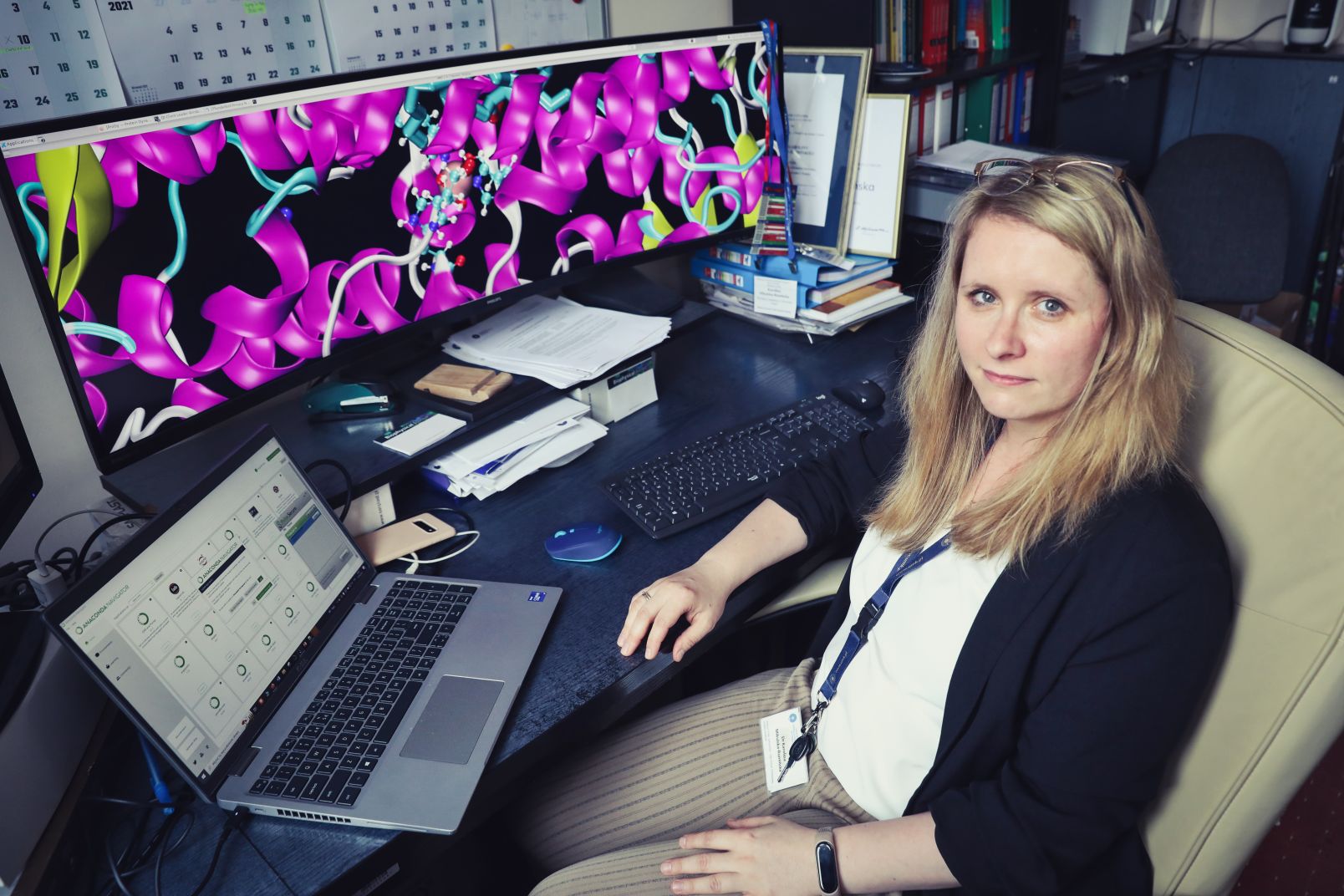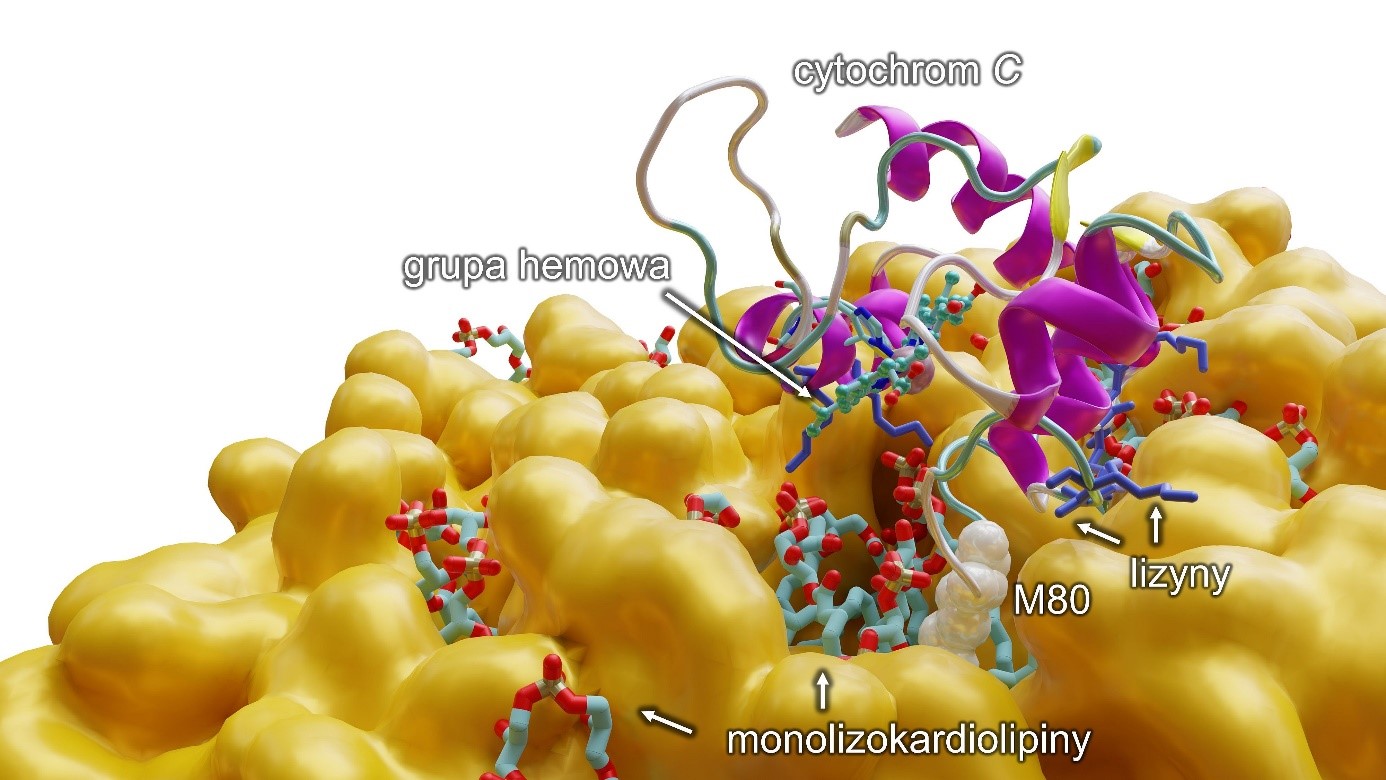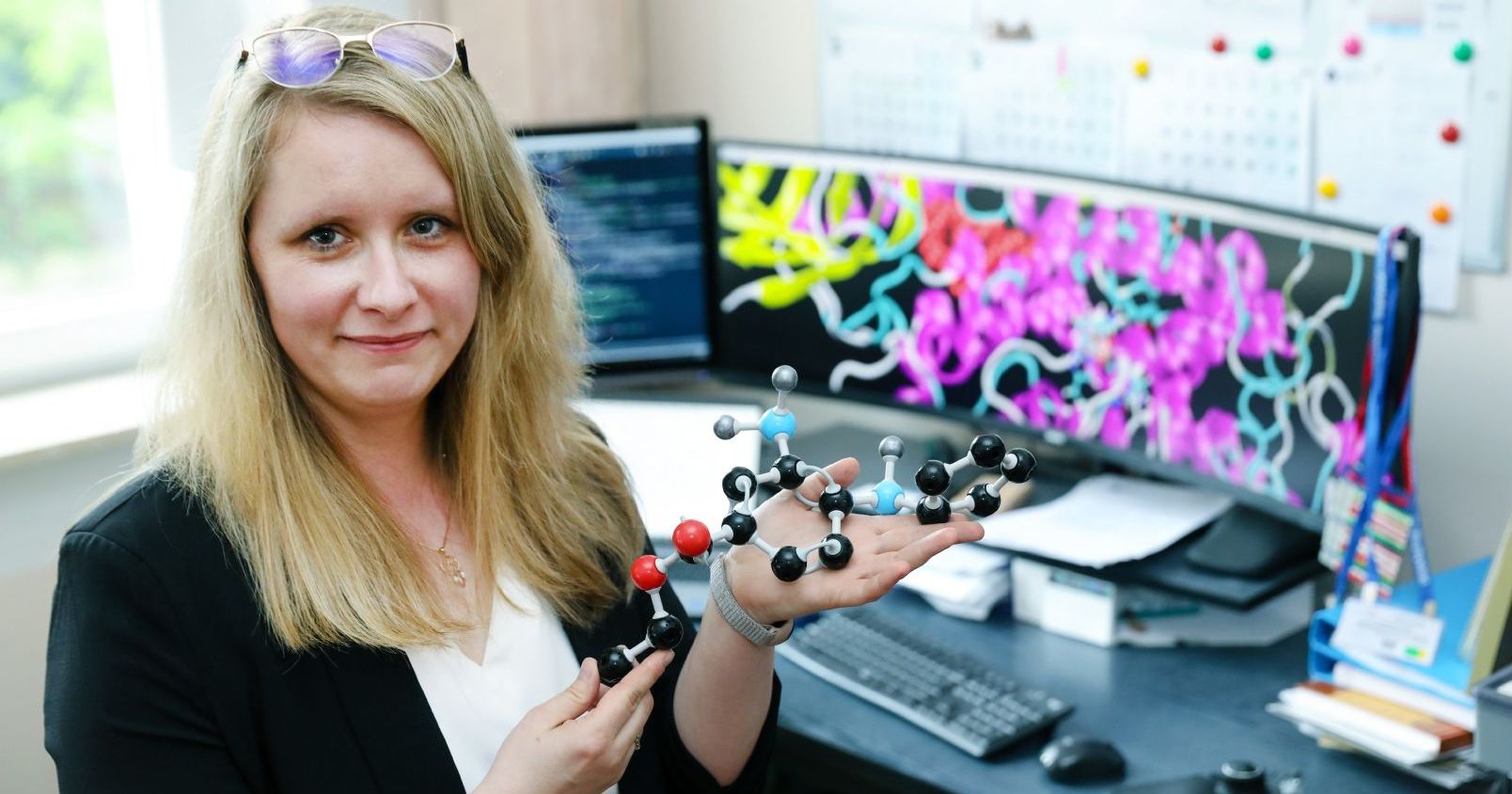 Exact sciences
Exact sciences
A breakthrough in research on a fatal disease
Boys suffering from Barth syndrome, a genetic determined disease with a very high mortality rate, finally have hope for a cure. What has contributed to this finding is research of Dr. habil Karolina Mikulska-Rumińska, NCU Professor from the Institute of Physics. The article about breaking through results of work of an international team of scientists has just been published in "Nature Metabolism"
Barth syndrome is a disease correlated with chromosome X and it affects boys, whereas girls may be only symptom free carriers. It develops in the first decade of life, mainly during the first year since birth. The occurrence rate is 1 out of 400. Apart from such physical traits as deep-set eyes, prominent cheeks, high forehead or protruding ears, the people affected also suffer from other serious issues such as problems with the heart, skeletal muscles, they do not grow properly and have neurological problems, which are decreased visual and spatial capabilities and limited mathematical potential.
Hope for a cure
Although the first case was described in 1983 by a team of a Dutch scientist Peter Barth, so far, no effective cure has been found. Prognoses in patients are very bad. Most of them die in early childhood. Yet, there is hope – in the article "Anomalous peroxidase activity of cytochrome c is the primary pathogenic target in Barth syndrome", which was published on Thursday, 23 November in "Nature Metabolism", an international group of researchers did not only point to the leading pathogenic mechanism due to which Barth syndrome develops, but they also selected a chemical compound which may be introduced to clinical tests for patients suffering from the disease. One of the major authors of the publication is Dr.habil Karolina Mikulska-Rumińska, NCU Professor from the Chair of Biophysics in the Institute of Physics of the Faculty of Physics, Astronomy and Informatics of NCU.

Malfunction if the Energy Plant
So far, the therapy has been focused on treating symptoms: problems with the heart, brain and muscles. The mechanism responsible for the disease was not known. The scientists did not know what exactly affects its development. Only two drugs were clinically tested, both of which were unsuccessful – one does not work at all, whereas the other only partially alleviates symptoms and still does not give any chance to cure Barth syndrome. Therefore, a group of almost 40 researchers decided to see into this issue in a more extensive and comprehensive way. Starting from biochemical and biophysical experiments, through computer modelling, and finishing with tests on animals and trials on samples from biopsies from patients with Barth syndrome, professor Karolina Mikulska-Rumińska has been in charge of explaining molecular mechanisms which set the ground for the disease, applying computer modelling. The conclusions on this matter are breakingthrough.
In Barth syndrome, we deal with mutation of chromosome X, and more precisely in TAZ gene, which codes taffazin, a protein which takes part in metabolism of lipids, precisely cardiolipin – explains professor Karolina Mikulska-Rumińska. – What should be emphasized is the fact that cardiolipins are very important – they are found in mitochondria, which are our "energy production plants" empowering many processes in our organism. Once we deal with a mutation in taffazin, cardiolipins are not created, and instead monolysocardiolipins are accumulated, which are cardiolipins without one acylic bond. Then, there occurs a huge problem as cardiolipins impact the functions of a hundred of other mitochondrial proteins.
What is more, cardiolipins are created from monolysocardiolipins, mainly due to taffazin. In Barth syndrome, monolysocardiolipins accumulate, whereas a deficit of cardiolipins occurs at the same time. What is a direct cause of the dysfunction of mitochondria and leads to the disease named as Barth syndrome, has not been yet explained.
Toxic machinery
We have managed to establish that monolysocardiolipins, which are a poorer version of cardiolipins, combine with cytochrome c. It is a very important protein, responsible, among others, for cell respiration. It also takes part in the programmed death of the cell – explains professor Mikulska-Rumińska. – We have discovered that, by connecting with cytochrome c, a monolysocardiolipin changes its function and that it transforms it into an abnormal peroxidase capable of catalyzing peroxidases of mitochondrial phospholipids PUFA. In other words, the complex begins to work as a machinery creating "toxic phospholipids", which start to negatively impact muscles, the heart, and the brain. We have therefore proved that this complex – monolysocardiolipins with cytochrome c is the basis and the beginning of Barth syndrome.
The team of scientist have also pointed to a specific chemical compound which blocks the complex of cytochrome c with monolysocardiolipins. Professor Mikulska-Rumińska was in charge of computer modelling – she showed how the process runs. This allowed to better understand the molecular fundamentals of the studied model, which is indispensable for effective treatment.

Computer modelling which shows on a molecular level the reaction of a monolysocardiolipin with cytochrome c, which results in breaking the bond between iron from the hem group and metionin 80 (M80) and the transition of cytochrome to pentacoordiation form, activating at the same time an abnormal function of the protein, which is the capability of peroxidation of polyunsaturated fatty acids (PUFA).
In addition (in blue) there are lysines, amino acids with positive charge, which allow the cytochrome C to join the lipid membrane (in orange).
Dr. habil. Karolina Mikulska-Rumińska, NCU professor, completed her bachelor's and master's studies in the field of physical medicine in the Faculty of Physics, Astronomy, and Informatics at NCU in Toruń, she defended her Ph.D. and later habilitation in physical sciences with honors.
She completed three internships: in a pharmaceutical company ADAMED as a beneficiary of a European scholarship Sciex-NMSch in Laboratory of Physics of Living Matter at École Polytechnique Fédérale de Lausanne (EPFL) in Switzerland (half a year) and in the School of Medicine in Pittsburg (2,5 years) under the supervision of prof. Ivet Bahar, where, among others, she participated in projects of National Institute of Health (NIH). She has received grants PRELUDIUM3, SONATA15 and SONATA BIS12 financed by National Center of Science (NCN). She holds a post doctorate scholarship of L'Oréal-UNESCO for Women and Science (2021), International Rising Talent of an international program For Woman in Science of the foundation of L'Oréal and UNESCO (2022). She has been granted a scientific award of Stefan Pieńkowski of the Faculty of III Sciences and Earth Sciences of Polish Academy of Science (PAN) in the area of physics (2022).
The last three years she has devoted to the research on the process of regulated death cell, for which she was awarded with Distinction of Digital Republic of Poland, was listed in the first one hundred in Forbes Women (2021) and was nominated in the national plebiscite of wp.pl in the category #science (2023)
 NCU News
NCU News








 Exact sciences
Exact sciences
 Exact sciences
Exact sciences